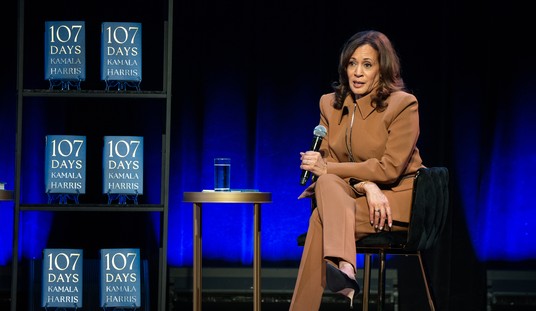
This week, the RedState Department of History rang in the new year with a staff exercise. We were asked to name our favorite inventions.
We were reminded of the old joke about the three scientists who were asked the same question. The first responded with the wheel because of the effect it had on the modern world. The second responded with the airplane because it made the world smaller and led to new avenues of science.
The third responded with the Thermos bottle, because it keeps hot things hot and cold things cold. When asked why that was such a big deal, he responded with “how does it know?”
Rimshot.
But today marks another milestone in the never-ending world of history. On this date in 1931, Thomas Alva Edison applied for his 1,093rd, and last, United States patent.
Edison’s first job was with Western Union as an Associated Press telegraph operator. Working the night shift gave him an opportunity to tinker – until he spilled sulfuric acid onto the floor one night which seeped through the floorboards and onto his boss’ desk below. That ended Edison’s first job.
Edison earned his first patent in 1869, for an electric vote recorder which didn’t gain widespread use. However, his creation of a multiplex telegraph system, which could send two messages at the same time, did. This invention morphed into the quadriplex telegraph, which could simultaneously send two messages in each direction, and marked Edison’s first great financial success when his old employer, Western Union, bought it for the equivalent of $220,000 in today’s money.
That sale allowed Edison to set up the world’s first industrial research facility at Menlo Park, New Jersey, and we all know what happened from there.
Edison is credited with inventing the phonograph in 1877, which earned him the nickname “The Wizard of Menlo Park”. The carbon microphone, which improved telephone communication, and of course the electric light bulb soon followed. He then patented a system of electricity distribution, and his place in history was assured.
Most of Edison’s patents were utility patents, which dealt with inventions that were electrical, mechanical or chemical in nature. But today’s anniversary brings down the curtain on his brilliant career. A full list of his accomplishments can be found here.
As for Edison’s final work, U.S Patent 1.908,830 is for a “holder for article to electroplated.” In explaining his invention, Edison notes:
“The present invention relates to an improved holder for an article to be electroplated and more particularly to an improved holder for diamonds and the like which are to electroplated in accordance with said U.S. Patent 1,600,722 and of said copending application Serial Number 649,826. It will be obvious, however, to one skilled in the art that my improved holder may be used to advantage with articles and apparatus other than those specifically referred to herein.”
Everybody get that? There will be a quiz later.
Of course, Edison is also credited with inventing the kinetograph, which became known as the motion picture camera.
Edison died in 1931 of complications from diabetes. Henry Ford was said to have asked that a sample of the air in the room where Edison died be contained in a test tube so that his last breath could be preserved.
Yet as great an inventor as Edison was (his list of patents can be seen here) by raw volume of patents, he isn’t the world’s most prolific inventor – or even America’s.
Japanese inventor Shunpei Yamazaki, who is active today and works primarily in the field of solid-state physics and computer science, has earned 5,350 patents in his career. Lowell Wood, Jr. who was involved in the Strategic Defense Initiative, is credited as the most prolific American inventor with 1,812 patents. The great Edison is eleventh on the all-time list.
Happy Sunday and enjoy today’s open thread!














Join the conversation as a VIP Member